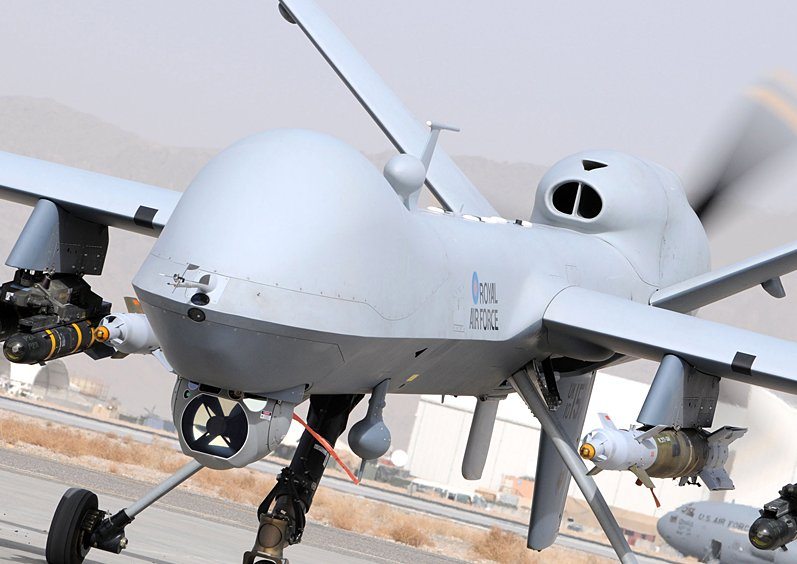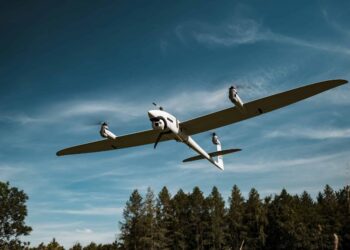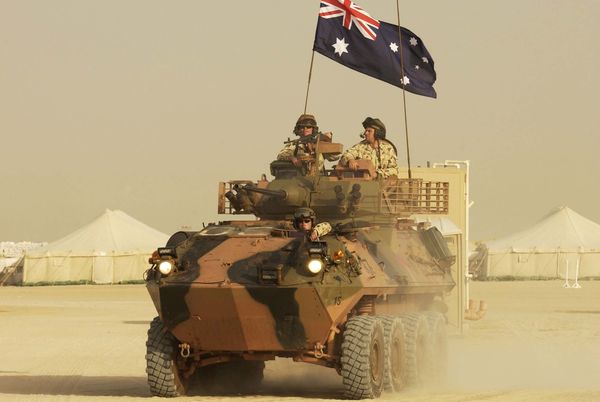Hummingbird drones fly at 11 mph and can perch on windowsills. The 3-foot-long Raven can be tossed into the air like a model airplane to spy over the next hill in Afghanistan. The Air Force’s new Gorgon Stare aerial drone sensor technology can capture live video of an entire city. From the RQ-4 Global Hawk and MQ-1 Predator to considerably smaller aerial drones in recent years, the Air Force has experienced an unmanned aircraft revolution in the decade since Sept. 11, 2001.
“Remotely piloted aircraft was one of the most important developments since 9/11,” Air Force Chief Scientist Dr. Mark Maybury said. “They’ve been instrumental in increasing our ability to extend our persistence. A natural consequence of extending persistence is an ability to increase your tactical patience. That has a very positive impact on increasing knowledge because you have a chance to loiter and see more things, and the unintended, but very positive consequence of reducing civilian casualties by providing the time necessary to ensure positive identification.”
The Air Force proposed in the “Unmanned Aircraft Systems Flight Plan, 2009-2047” to use next-generation, unmanned aircraft in a number of new ways, such as air strikes, aerial refueling, cargo transport and long-range bombing.
“UAVs have become such an important tool for our decision makers — operational battlefield decision makers and strategic decision makers,” retired Lt. Gen. Victor E. “Gene” Renuart Jr., commander of U.S. Northern Command from 2007 to 2010, said in a Pentagon Channel interview. “They have become an accepted part of our inventory.”
Long before 9/11, former Air Force Chief of Staff Gen. John P. Jumper, then U.S. Air Forces in Europe commander, envisioned giving unmanned aerial vehicles offensive capability that would allow immediate action when their surveillance cameras spotted high-value targets. In 1999, RQ-1 Predators flew over Kosovo 24 hours per day in surveillance of hostile forces.
Almost seven months before 9/11, a Predator successfully fired a Hellfire missile in flight near Nellis Air Force Base, Nev. The same Predator was among the first three UAVs to deploy overseas on Sept. 12, 2001. By the height of Operation Iraqi Freedom in 2005, Jumper told Congress he wanted to buy every Predator the General Atomics Aeronautical Systems in San Diego could build, and the Air Force announced it would buy 144 Predators and increase the squadrons of robotic spy planes from three to 12 in the next five years.
“It seemed obvious to me that if you have a vehicle out there that is staring at a target, it probably ought to have something on board that can do something about it,” Jumper said. “This was, again, a little bit of a clash of cultures between the intelligence community and operations community, but we’ve ended up in the right place. When we do find things that are of high value, fleeting and perishable, we have the ability to take action with the vehicles that are very capable of carrying ammunitions.”
Jumper was deputy chief of staff for air and space operations at Headquarters, U.S. Air Force when three new UAVs came on board in 1996. Of the three, the Global Hawk, Predator and Dark Star, it soon became obvious the first two held the most promise because of their capabilities for 24-hour streaming video. Their performance in Afghanistan and Iraq in the past decade confirmed that promise, even when the UAV role in place of manned aircraft met some resistance.
“It always amuses me that people think UAVs are the enemies of pilots when guys like myself and [former Chief of Staff Gen. Ronald] Fogleman are the guys who were most enthusiastic about bringing them on board,” Jumper said. “The people I know who fly airplanes are delighted when they find a Predator down there that can tell them exactly where their target is. So these are some of the myths we have to overcome. But these things will help redefine the future in a lot of different ways, and the Air Force, as it always has [been], is very ready to accept the changes that are inevitable.”
Since 9/11, UAV capabilities have rapidly advanced with technological progress like miniaturization and real-time digital imagery, Maybury said. One problem that has developed with the advancements has been the millions of minutes of video collected by aircraft like the Predator. Every day, the Air Force must process almost 1,500 hours of full-motion video and 1,500 photographs from around-the-clock combat air patrols. Military archives hold 24 million minutes of footage, but analysts have difficulty accessing information that could be useful.
“We’ve been very active with 57 continuous remotely piloted aircraft on station and 400 firefights in the past year alone, and 30,000 hours of full-motion video and 11,000 high-fidelity images, just in the past month,” Maybury said.
“So we have massive amounts of collection across heterogeneous sensors, and that’s unprecedented. The Air Force is leading the charge in this area. We’re expected to provide large amounts of real-time surveillance across broad areas, demanding intelligent automation to accelerate sensor data fusion and exploitation to enhance the productivity of valuable analysts.”
The service branches recently began looking at the same technology used by ESPN, the NFL and TV news broadcasts to catalog information provided by UAV cameras. Jumper predicts even more unmanned aircraft development and expansion in the decades to come.
“I think we will have even more capability with the networked UAVs and to be better organized about how we search,” Jumper said. “The cloud technology that’s become available today will allow platforms like the Predator and the Global Hawk to sort of deposit information in a place where it can be readily pulled. Even the nature of data storage today, where you can fit terabytes of information in the size of a shoebox, allows you to store things on board rather than transmit all of it, and provide what’s called for. These are all technologies that are going to make a profound difference, not only in the way we transmit data, but also in the way we organize our bandwidth from our communications satellites and our reach-back. It’s going to make a profound impact.”











